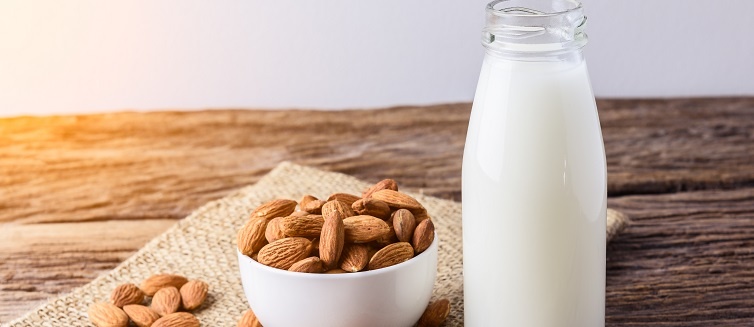Are you thinking about cutting dairy from your diet?
Maybe you suffer from a dairy allergy or lactose intolerance. Or perhaps you’ve heard that consuming less dairy can improve your skin. Whatever your reason, it’s important to know the advantages and disadvantages of dairy before going dairy-free.
Never Miss a Beat!
Never Miss a Beat
Thank you for subscribing!
You can now select the specific newsletters you'd like to receive.
You are already subscribed.
Subscribe to more newsletters in our email preference center.
Sorry, an error occurred. Please try again later.
Get Healthy Tips Sent to Your Phone!
The Benefits of Cutting Out Dairy
According to the U.S. National Library of Medicine, about 65 percent of the population has some degree of lactose intolerance after infancy. If you’re lactose intolerant, then you know how uncomfortable it can be; eating dairy can cause cramps, bloating, gas, stomach pain, and diarrhea. Cutting your dairy consumption can limit these painful symptoms. In fact, most doctors recommend that people who have a milk allergy or lactose intolerance switch to a dairy-free diet.
Even if you don’t have lactose intolerance, you might want to consider going dairy-free if you have digestive trouble or a sensitive stomach. Milk stimulates the stomach to produce acid, which can be irritating to some people.
A diet free of dairy also has been linked to better skin. A recent study published in Nutrients found that eating dairy products is associated with an increased rate of acne. Skipping the cheese could be just what your pores need.
Foods That Provide the Same Nutrients as Dairy
A primary concern with a dairy-free diet is whether the switch will deprive you of vital nutrients. The good news is that you can get calcium and protein, the main nutrients in dairy products, by adding these foods to your diet:
- Fortified milk substitutes such as almond or soy
- Leafy green vegetables
- Broccoli
- Tofu
- Beans
- Seeds and nuts
- Fish, including sardines and salmon
Protein, another common nutrient found in dairy products, can be added to your diet with these foods:
- Beans and peas, including lentils, chickpeas, and soybeans
- Nuts, including almonds, cashews, and peanuts
- Whole grains, such as wild rice, oats, and buckwheat
Getting Vitamin D on a Dairy-Free Diet
It’s common to link milk with vitamin D, but milk actually doesn’t contain the vitamin naturally — manufacturers add it to milk.
To get the perks of vitamin D without drinking milk, consider taking a daily multivitamin that contains 1,000 international units (IUs) of vitamin D. Depending on your specific needs, your doctor may recommend taking a daily vitamin D supplement of 3,000 or 4,000 IUs, especially if you live in an area that gets little sunlight. You can also try to add more vitamin D-rich foods such as salmon, tuna, sardines, and liver to your diet.
To learn more about the benefits of going dairy-free, visit Nutrition Services at UPMC or call 412-692-4497 to make an appointment.
About UPMC
Headquartered in Pittsburgh, UPMC is a world-renowned health care provider and insurer. We operate 40 hospitals and 800 doctors’ offices and outpatient centers, with locations throughout Pennsylvania, Maryland, New York, West Virginia, and internationally. We employ 4,900 physicians, and we are leaders in clinical care, groundbreaking research, and treatment breakthroughs. U.S. News & World Report consistently ranks UPMC Presbyterian Shadyside as one of the nation’s best hospitals in many specialties and ranks UPMC Children’s Hospital of Pittsburgh on its Honor Roll of America’s Best Children’s Hospitals. We are dedicated to providing Life Changing Medicine to our communities.
